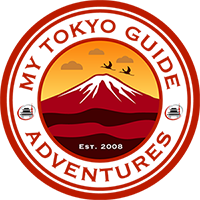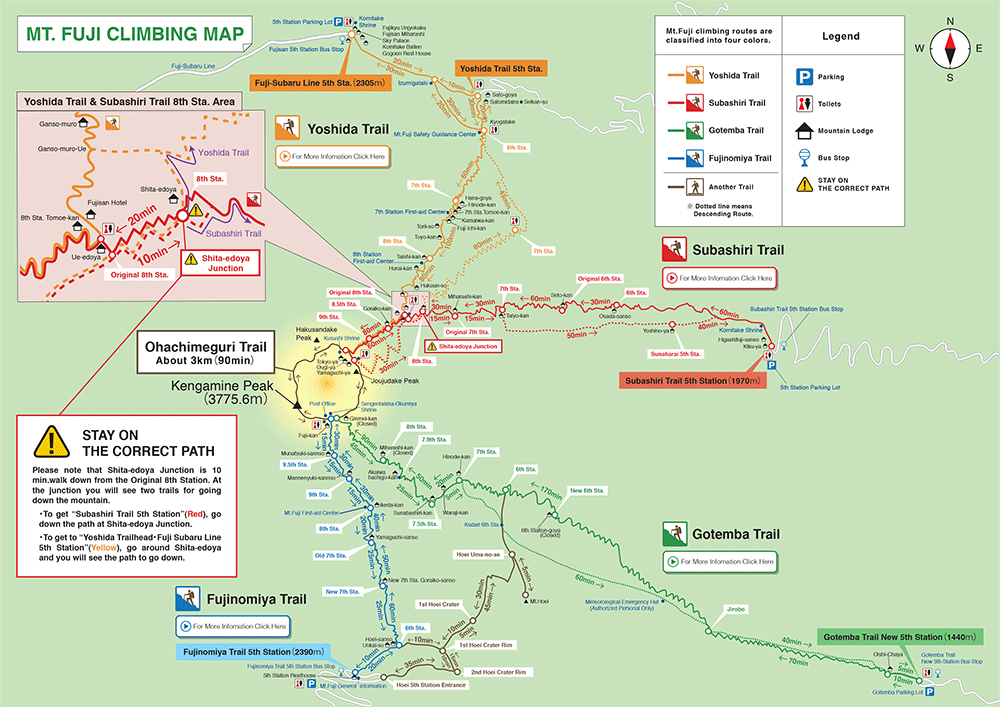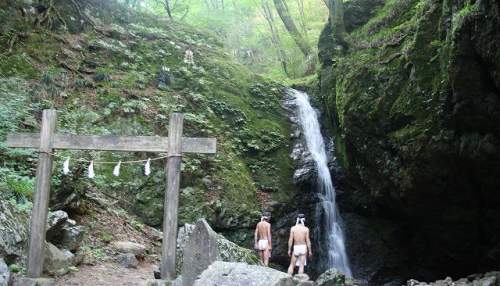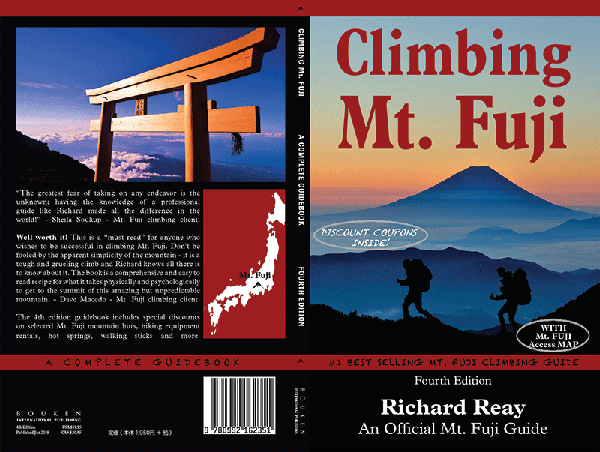|
Mt. Fuji Starting Points: As we arrange many Mt. Fuji climbs every year and we receive countless questions about the Mt. Fuji climbing routes: For example: Which Mt. Fuji climbing route is the easiest? Which Mt. Fuji climbing route has the best views? Which route is the most challenging? Safest? etc. and so on and so on. So, in this blog post I would like to review the specifics climbing routes as well as give my personal opinion of each route from my point of view “a Mt. Fuji Guide with 11 years’ Mt. Fuji climbing experience, over 350 Mt. Fuji climbs and multiple climbs of each Mt. Fuji climbing route. First of all, as many already know Mt. Fuji has four different climbing routes, each starts from a different 5th station at a different elevation and each has its own pros and cons. (See Route Mt. Fuji Map Below) Yoshida Route (3,720m)
Subashiri Route (3,720m)
Fujinomiya Route (3,715m)
Gotemba Route (3,715m)
Ok now for "My Two Cents" as a Mt. Fuji Guide: The Fujinomiya Ascending Route: For me personally I enjoy the Fujinomiya Ascending route the best, as this trail skips all those zigzagging loose gravel lallygagging trails and gets strait to the bones of the climb, from the 6th station upwards it is almost a direct route to the summit. Some may find this challenging but the fact is all the ascending climbs on Mt. Fuji are hard, however this route just gets to the hard part faster, and has less loose gravel trails and more steady rock portions that can be found on each trail. Also, the people that come to the Fujinomiya trail unlike other trails come entirely to climb Mt. Fuji so there is a pleasant mountaineering vibe and the local guides/Mountain hut staff Fujinomiya still have that local friendly camaraderie. The Gotemba Descending Route: The Gotemba Descent/Sand Run is by far the easiest descending route on Mt. Fuji – the soft sandy trails make the decent enjoyable after a long hike up, and many that still have energy actually run down this trail, (at your own risk) however as there are few mountain huts on this trail rest-room breaks are few are far between, also due to the wide-open position on that side of the mountain the Gotemba trail gets some strong wind conditions especially near the Hoei Crater. The Yoshida Route: I absolutely avoid the Yoshida route like the plague, not because of the route itself, but because of how over-crowded it has become, due to the easy access and large 5th station the Yoshida route gets the bulk of the tourist and climbers. Around 70~80% of the people who climb Mt. Fuji use this route, as well each day in the summer time up to 200 tourist buses stop at the 5th station along their Hakone/Mt. Fuji Day Tour route making the Yoshida 5th Station another Shibuya Crossing. Also, and I do not want to sound too harsh here but due to the large number of tourists SOME of the Yoshida workforce = Staff/Guides seem to lost some of their local Mt. Fuji friendless that made Mt. Fuji famous in the first place. Trail Views & Sunrise: Each trail offers a different view and distinctive view of the sunrise: So, this is hard to comment on as I enjoy all and really a lot depends on the weather on the day of your climb: You can see next to the route name I but the put the route summit elevation, in fact many people who climb Mt. Fuji reach the trail summit and think they have reached the summit of Mt. Fuji when in fact they have not. Mt. Fuji summit as you can see on the map is Kengamine Peak at 3776m about another 50m higher than the trail summits. So, to reach the summit you need to walk also the crater and climb to the highest point Kengamine Peak at 3776m. From here the highest point is one of my favorite Sunrise points as this overlooks the summit crater to view the sunrise. The Craters – The Hoei Crater and the Summit Crater Both these craters show the scars of Mt. Fuji and display a spectacular sight on a clear day, The summit crater can be accessed by all the trails however the Hoei Trail can only be accessed from the Gotemba/Fujinomiya routes and you can hike right into the Hoei crater from here. To check the 2020 Mt. Fuji Climb Schedule, Availability and to reserve your 2020 Mt. Fuji Climbing Tour please see our live booking system below:
https://www.mytokyoguide.com/booking.html #mtfujiclimb #mtfujiclimbtips #mtfuji #mytokyoguide
1 Comment
Top 5 Japan hikes with views of Mt. Fuji.Mt. Fuji is by far Japan’s most famous and Iconic Mountain However, one important point to note is when you are hiking Mt. Fuji you can’t actually see Mt. Fuji. Therefore, I would like to suggest some easy alternatives to hiking Mt. Fuji that will give you a great view of Mt. Fuji and you can hike these throughout the year. #1 Mt. Mitake (Mount Mitake) Mt. Mitake, located about 50 kms Northeast of Shinjuku, Mt. Mitake is still considered inside the Tokyo ward. The summit is 929 meters high and is covered with beautiful forested area with a picturesque stream, lots of moss covered stones and two nearby waterfalls. Like most mountain in Japan there is also a rope-way that takes you half-way up the mountain. It takes less than an hour to reach the summit after getting off the rope-way. Once you reach the summit you can hike another hour and reach Mt. Otake (1,267 meters). Access: Mitake station from Shinjuku Station using the JR Chou Line (Change at Ome Station to local Ome Line) Fully covered by the Japan Rail Pass #2 Mt. Mitsutoge (Mount Mitsutoge) Mt. Mitsutoge, located in Yamanashi prefecture where half of Mt. Fuji is located offers by far the best view of Mt. Fuji. The Mt. Mitsutoge summit is 1785m and it is a more difficult high than Mt. Mitake. The summit top of Mt. Mitsutoge offers 360 degree panoramic views of Mt. Fuji, Lake Kawaguchi and the surrounding areas. The hike is difficult in some places and is moderately long (4 - 6 hours return depending on your route choice) but is well worth it for the amazing views and the serenity at the top. There are several trials but starting from Mitsutoge Station trail and end the hike a Kawaguchi Lake us highly recommend if you have a full day: The descending Kawaguchi Lake trail passes through Mt. Shimoyama, Mt. Kinashiyama and Mt. Tenjo (Mt. Kachi Kachi), Before reaching Kawaguchi lake. Access: Mitsutoge Station and Kawaguchi Stations are both accessible from Shinjuku Station using the JR Chou Line: Fully covered by the Japan Rail Pass. #3 Mt. Takao (Mount Takao) Just a one-hour trip west from Tokyo, the sacred Mt. Takao offers a unique blend of Japanese culture and beautiful nature. The area boasts a variety of hiking courses, historic temples and an exhilarating view from the summit. In 2007, the famous Michelin Travel Guide, named Mt. Takao a three-star winning mountain and one of the best places to discover the “real Japan”. Mt. Takao, designated as a national park forest state, is covered with a natural mixed forest of old aged coniferous, beech and broad-leaved trees which remain vertically untouched from ancient times. The area is especially beautiful in autumn when the leaves turn color. The summit 600 meters above sea level provides an exhilarating panoramic scenery of Tokyo and the surrounding Kanto mountains of Chichibu, Nikko, Tanzawa, and Mt. Fuji on a clear day. There are six well-maintained hiking courses starting from the foot of Mt. Takao-san and leading up to the summit, each with a different theme, allowing visitors to learn about the nature of Takao. You can also ride halfway up the mountain by cable car or lift, so that the remaining climb to the top is not so difficult. Near the cable car terminal is the Takao-san Natural Zoo and Botanical Garden, where you will be greeted by monkeys that range freely throughout the area. Hiking on Mt.Takao is an all-year-round destination; After reaching the top serious hikers can continue on to Mt. Jinba (857m) for a whole day of hiking. Access: Mt. Takao Station from Shinjuku Station using the JR Chou or Keio Line: Fully covered by the Japan Rail Pass #4 Mt. Jinba (Mount Jinba) Mt. Jinba is located in nearby Kanagawa prefecture and is a higher (at 854 meters) mountain and more changing climb than the more famous Mt. Takao (at 599 meters). Even less people know that you can actually climb from Mt. Takao to Mt. Jinba (or vice versa) in one day. The 7-hour hike, is not as challenging as say a Mt. Fuji climb, however it is a longer hike (18 kms) and easy to get lost if you cannot read Japanese, so it is not recommended you try this trail alone, trying with someone that has done the trail before or getting a guide to go with you is best. Access: Mt. Takao Station from Shinjuku Station using the JR Chou or Keio Line: than take bus to Jinba-Kogen-Shita bus stop and start you hike from here: #5 Mt. Tenjo (Mount Tenjo) Mt. Tenjo. also, known as Mt. Kachi Kachi is 1104m high and located in Yamanashi-prefecture, was already mentioned with #2 Mt. Mitsutoge. However, as it offers the closest and clearest views of Mt. Fuji, I would like to include this mountain as a completely separate climb; like Mt. Mitsutoge, Mt. Tenjo offers 360 degree panoramic views of Mt. Fuji, Lake Kawaguchi and the surrounding areas. However, Mt. Tenjo can be easily hiked in much less time around 3~4 hours, starting and ending from Kawaguchiko Station. The Mt. Fuji Panoramic Ropeway takes you near the peak of Mount Tenjo from the Eastern Shores of Lake Kawaguchiko however by doing so you miss many of the scenic viewpoints of Mt. Fuji accessible along the trail to the summit. Access: Kawaguchi Station accessible from Shinjuku Station using the JR Chou Line: Fully covered by the Japan Rail Pass A more difficult alternative includes Mt. Akadake at 2,899m Aka-dake is the highest peak of the Yatsuga-dake range:
#Mt. Takao, #Mt.Jinba, #Mt. Fuji Views #Mt.Tenjo, #Mt. Mitake, #Mt. Mitsutoge #MtTokyoGuide Getting to Mt. Fuji: Numerous first timers to Japan often make the same mistake, assuming Mt. Fuji is easily accessible, when in fact most do not understand the vast area Mt. Fuji actually covers and often fail to plan accordingly. The Fuji-Hakone-Izu National Park is 1,227 square kilometers, larger than both the area of Singapore and Hong Kong. There are four distinctive climbing routes on Mt. Fuji and several different ways to access these Mt. Fuji climbing routes. For the purpose of climbing Mt. Fuji, there are three Key Access Points: 1.North Mt. Fuji – Kawaguchi Lake Station Access Point: - You get can to here by Bus or Local JR Train - From Kawaguchi Lake Station, there are regular buses to the Yoshida Trail 5th Station 2. East Mt. Fuji - Gotemba Station Access Point: - You can get here by Romance car or local JR train or Bus. - From Gotemba Station there are climbing buses to the Gotemba and Fujinomiya 5th stations 3. South Mt. Fuji – Shin-Fuji Station Access Point - This is the only area on Mt. Fuji you can access by Bullet Train - You can get there by Bullet Train from Kyoto, Tokyo, Yokohama and Hakone (Odawara) - From Shin-Fuji Station there are climbing buses to the Fujinomiya 5th station (Summer Only) Using the South Access Point: There are Bullet Train Climbs available during the summer climb season. Mt. Fuji Bullet Train Climbs Climbing Mt. Fuji is hard enough without having to wait in traffic, the journey to or from Mt. Fuji from Tokyo can take up to 3hrs in peak summer traffic. On the other hand, the super-fast bullet train only takes 60 mins and there is never any traffic. Relax in the perfectly spotless, comfortable bullet train after your Mt. Fuji climb. Your special transport will meet you at the Mt. Fuji bullet train station and take you direct to Mt. Fuji 5th station, after your climb adventure your transport will return you to the Mt. Fuji bullet train station so you can continue your journey of exploring Japan. Tour Notes:
* Mt. Fuji climbs are available from (May to Oct) * For more information on Mt. Fuji Climbs please Contact Us: Conquering Mt. Fuji is at the top of many people’s bucket lists and with the climbing season only a few months away, it is not too early to begin planning for your 2019 Mt. Fuji climb. Planning ahead will help you make the right choices and there are several key points to consider when planning your Mt. Fuji climb:
A good start when planning your climb to tackling Japan’s most iconic mountain is purchasing the latest edition of the Climbing Mt. Fuji Guidebook. This guidebook is a comprehensive and easy to read recipe for what it takes physically and psychologically to get to the summit of this amazing but unpredictable mountain. The author covers all facets of preparation, equipment, training and most importantly, altitude. Available on Amazon.com
|
Author: Richard ReayAdventure lover and Mt. Fuji Climbing and Japan Enthusiast. Archives
April 2019
Categories
All
mt Fuji GuidebookJapan WirelessJapan Wireless Wifi Enter Coupon Code JWMYTOKYOGUIDE to receive a ¥500 discount
|
My Tokyo Guide |
Mt. Fuji |
|
My Tokyo Guide is a member of the All Nippon Travel Agents Association (ANTA)
Copyright © My Tokyo Guide Inc. All Rights Reserved | 2008 - 2024 |













 RSS Feed
RSS Feed



